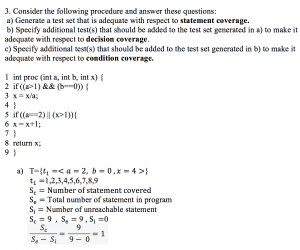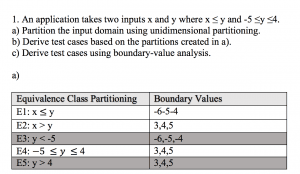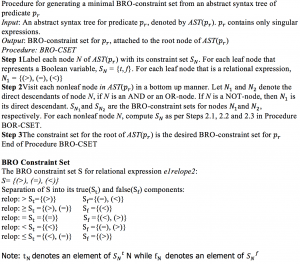Equivalence Class Partitioning and Boundary Value Analysis Example
How to read all image from sub folder of assets in android
Create new project and add an imageswitcher to activity_main.xml then open MainActivity.java firstly we need to reach assets folder in android to reach assets folder there is an assets manager basicly you can use assets manager like that
AssetManager assetManager = getAssets();
/* this will read main folder of assets
if you need read sub folder
just add folder name before file (subfolder/filename)
*/
InputStream inputStream= assetManager.open("File name");
Generation of BRO constraint set (BRO-CSET)
MSSQL Server stored procedure
CREATE PROCEDURE ProductInsert( @ProductName varchar(25), @Price int, @ProductInStock int) AS IF EXISTS(SELECT * FROM PRODUCTS WHERE ProductName=@ProductName) BEGIN PRINT 'This product already there is '; END ELSE BEGIN INSERT INTO PRODUCTS (ProductName,Price,ProductInStock) VALUES (@ProductName,@Price,@ProductInStock) END
MSSQL Server Trigger
Trigger is used to run sql query after some action in database like delete, instert, update. I created two tables which are SALES and PRODUCTS.

Continue with reading
MSSQL Server Constraints
There are six constraints which are NOT NULL, UNIQUE, PRIMARY KEY, FOREIGN KEY, CHECK, DEFAULT. I will explain all of them with giving example for each one.
NOT NULL : If you use this constraint for a column then this column cannot contain null value.
UNIQUE : Ensures that every column has a unique value.
PRIMARY KEY : Primary key has two specific rules If a column has primary key constraint then it must be not null and unique. When we use primary key it will help us to find record which we are searching correctly.
FOREIGN KEY : This constraint ensures the value in a column in a table to match value in a column in another table.
CHECK :Ensures which the value in a column meets a specific condition.
DEFAULT : It is using for put a default value when create new record for a column.
Calculating man-month
There is a table which contain three project type we need to know what kind of project we will create.The value of the table can changes for different company
| a | b | c | d | |
| Organic | 2.4 | 1.05 | 2.5 | 0.38 |
| Semi-Detached | 3.0 | 1.12 | 2.5 | 0.35 |
| Embedded | 3.6 | 1.20 | 2.5 | 0.32 |
Calculating Person Quality
There is a three steep
- Find the Weighted-Defect from the table this value of table can changes for different company
| Defect Types | Weights |
| Serious | 10 |
| Medium | 3 |
| Trivial | 1 |
Decision table for determining the days in a month
M1 = {x: x is a 30-day month}
M2 = {x: x is a 31-day month}
M3 = {x: x is February}


